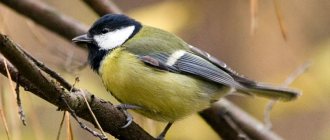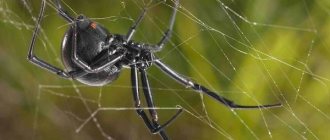Land and sea turtles are among the most popular pets. Not only children but also parents like them. Pet turtles are easy to care for, they are unpretentious and can take root in almost any indoor environment. Of course, in order for pets to feel as comfortable as possible, they need to be provided with proper care, nutrition and care.
Turtles are easy to care for, allowing both adults and children to keep them
Red-eared slider: the most popular species
Residents of megacities prefer to keep this sea turtle most often . With proper care, it can please its owners for at least 30 years!
It is believed that 15 subspecies of this breed. A characteristic external feature of all of them is red or yellow spotslocalized in the ear area. The paws have stripes of a rich green hue. The height of such individuals is within the range of 18-30 cm.
The red-eared turtle stands out with its markings
IMPORTANT: To determine age, it is recommended to pay attention to the shell. The younger the turtle, the lighter its shell.
These beauties are accustomed to living in swampy reservoirs and ponds in the USA, Mexico, England, Israel, Spain and Australia. Therefore, of course, a pond for your pet. But not in the form of a basin with water and a pebble.
We need a larger aquaterrarium with lamps, filters, and a thermometer . water should be approximately 28 degrees, and the air should be 32. The ideal solution would be to build an island in the middle of the turtle's residence.
feed your pet small crustaceans, fish fry, and small boneless fish. He also loves the larvae of small frogs and insects. A small number of plants will successfully season a dish.
IMPORTANT: It is worth getting several red-eared turtles at once. Their fun games will amuse both children and adults.
Red-eared turtles are fun to keep in groups
Land reptiles
The land turtle is incredibly slow compared to the freshwater turtle. Please note that when an animal is frightened, it immediately hides its head under its shell.
There are giant individuals, but small or very tiny ones, up to 10-12 cm, are suitable for the home. On average, they live at home for 30 years.
Central Asian tortoise: the most delicate to handle
Despite the fact that this beauty is present in the Red Book , you can purchase it without any problems. This is what many animal lovers use. Oddly enough, despite its delicate status, this turtle is often found in captivity. And in the wild - in Central Asia.
This most popular land turtle does not like confined spaces . That is why in captivity she is capricious and may even die.
However, if the owner takes care in arranging the pet’s home, the turtle can feel quite comfortable. That is, you need to prepare a spacious house - an enclosure with a volume of at least 100 liters. A dwelling requires the presence of not only soil, but also sand and pebbles. The Central Asian turtle is passionate about digging holes, so it will be delighted with such flooring.
The diet should include mainly foods of plant origin. Meat products are not for these beauties. The only thing is that sometimes you can treat them to larvae and insects.
IMPORTANT: But in the most minimal quantities!
This extremely slow pet is distinguished by its yellow-beige color, with dark inclusions. The length of the shell is 20-25 cm.
This is what the Central Asian land turtle looks like
Trionix Chinese: the most unusual turtle
Another pet that can be found in the Red Book. But it is remarkable not even for this, but for the fact that it truly looks amazing. Trionix belongs to the so-called “soft-bodied” turtles. That is, its shell is completely soft due to the fact that it is covered not with horny plates, but with skin. is also amazing . On the muzzle there is a proboscis with large nostrils . The length of an adult is 40 cm.
Trionix chinensis has a rather unusual muzzle for a turtle.
The lack of an armored house of these reptiles is more than compensated by the presence of sharp claws and teeth. And also quite a fighting character. If Trionix intends to bite, then the bite will be quite noticeable. And, moreover, traumatic.
IMPORTANT: Therefore, it is strongly recommended to purchase such a turtle at a young age - it must get used to its owner. Only then will Trionix not be aggressive.
Chinese amphibians love fresh water and soft soil. The home of such a pet should be spacious and closed. water temperature to 25-32 degrees. Of course, it is important to take care of filtration, aeration, sufficient light and heat.
Trionix loves protein foods . You can feed him fish, bloodworms, insects, shellfish, meat, and worms. However, you should always remember that Trionics are greedy, so it’s easy to overfeed them beyond the norm.
Trionix Chinese is an unusual turtle that can be used to create an unusual aquarium at home
European Swamp Turtle: Hibernating Pet
The main external distinguishing feature of this turtle is its completely black color with occasional yellowish splashes. The shell of this individual is smooth and flatter than that of other turtles. Another distinctive feature is the long tail. Without exaggeration, it takes up ¾ of the length of the turtle itself. Moreover, the length itself is within 35 cm.
Such an amphibian is not considered exotic in our country - it is accustomed to living in Belarus, Russia, Georgia, and Armenia. Ponds and lakes are ideal habitats for these turtles. Since it can be cold in our regions, from about October until the end of winter the turtle hibernates .
As for keeping it at home, you need to take into account the temperature that will have to be maintained. The water temperature should ideally be 22-25 degrees, the air temperature should be 30. Also, pets should definitely have their own personal island on which they will relax.
Swamp turtles prefer fish, meat, insects and crustaceans. It is also recommended to give mineral supplements . It is curious that such a turtle can be taught to take food from tweezers - since it is a predator, it is not short of intelligence.
IMPORTANT: You need to remember that adults should be fed 2 or 3 times a week, and young ones - every day.
This is what a European marsh turtle looks like
Musk turtle: miniature turtle
The length of the shell of this turtle, accustomed to living in the southwestern part of the United States, is only 13.5-14 cm. However, in addition to its compactness, it has something to surprise. This amphibian is surprisingly unpretentious . Any room temperature will be accepted with a bang.
Like any food. Small fish, shrimp, algae, insects, cabbage, salad - the turtle will eat all this with pleasure. She also loves meat , as in natural conditions she is accustomed to eating carrion. Therefore, there is a high risk that your pet will slightly pollute the water. In this regard, it is recommended to either feed him with food on a stick , or clean the aquarium more often.
However, despite the ease of keeping, the musk turtle can present a surprise if it senses approaching danger. And this will be a frequent problem unless she gets used to her owners from childhood. The glands located under the shell emit a rather repulsive odor.
IMPORTANT: Don't be alarmed by the fact that turtles spend most of their time underwater. This is completely normal for this species.
The musk turtle loves to move along the bottom most of all.
Water representatives
Aquatic pet turtles are diverse. These reptiles have membranes on their limbs.
Most species inhabit water bodies where water movement is weak. There are both carnivorous and herbivorous reptile species.
Mediterranean tortoise: a heat-loving pet
The second name for this turtle is “Greek”. And it has about 20 subspecies . The largest representatives can boast a shell 35 cm . On the hind legs there are peculiar spurs and small horny tubercles. The front paws are marked with claws, 5 pieces on each.
In the wild, turtles live in a wide variety of climatic conditions. Since the range extends throughout the European south. Shrubs in the mountains, open forests, steppes, semi-deserts - this beauty will be comfortable everywhere. the Greek tortoise has no equal in terms of thermophilia
Accordingly, a lot of light and warmth are needed in captivity. is preferable to choose a lamp with a power of at least 40 W. And best of all - 60. This reptile is smart enough, so it will choose the mode it needs on its own - it will either move away from the lamp, or move closer to it.
IMPORTANT: But, of course, nothing can replace real warmth from the sun. Therefore, if the weather is good, you definitely need to take your pet for a walk.
Greek turtles prefer to eat plant foods. Foliage, grass, berries, fruits are the most delicious food for them. However, snails, slugs and insects can also keep them happy.
The Mediterranean tortoise is a big fan of soaking up the sun.
Egyptian tortoise: a mysterious pet
Despite the fact that this species has been known to science for more than a century, its habits are still little studied. However, scientists immediately noticed that at the slightest sense of danger, turtles begin to actively bury themselves in the sand. In Egypt, Libya and Israel, where they come from, this is not difficult to do.
Of course, similar conditions should be recreated at home. Some Egyptian owners prefer to cover the terrarium with sand, while others mix it with soil. But experienced turtle owners strongly recommend adding shell rock - it gives some hardness to the soil and serves as a source of calcium. shelter for the turtles - this way they will feel more comfortable.
The temperature should be about 22-24 degrees . From about October to April it needs to be lowered , since at this time the turtles hibernate.
Pets can be once a week . They love to eat plants of the genus Artemisia, herbs, salads and even hay as a source of coarse fiber. is also important .
IMPORTANT: Egyptian tortoises should not be kept alone. It is preferable to choose a pair. Better yet, keep a group of pets.
Egyptian tortoises love sand
Diseases and prevention
The land turtle rarely gets sick. Improper living conditions and poor diet can lead to the appearance of some pathologies.
The most common diseases found in these pets are:
Rickets
This disease develops due to a lack of vitamin D and ultraviolet rays. It manifests itself in softening and deformation of the carapace and plastron.
In the early stages, pathology can be dealt with by revising the diet and installing an ultraviolet lamp in the terrarium.
If the disease has progressed far, then it is necessary to contact a veterinary clinic and undergo a course of injections of fortified calcium. But the curvature of the shell will most likely remain with the pet forever.
It is much easier to prevent the disease. To do this, you need to take your pet for a walk under the warm rays of the sun. And adjust your diet so that it contains enough calcium and vitamins.
Eye diseases
If your tortoise's eyes begin to water and swell, and the eyelids stick together and are difficult to open, then most likely there is a lack of vitamin A in the diet.
It is necessary to prepare a warm solution of chamomile and wash your pet’s eyes several times a day using a sterile cotton swab. Albucid and Sofradex eye drops are also used. Your veterinarian will likely prescribe multivitamin injections.
Nutrition needs to be reviewed and the diet adjusted.
Helminthiasis
If your pet begins to suffer from diarrhea or constipation, and whitish moving dots are visible in the excrement, then an infection with internal parasites has occurred.
They could enter the turtle’s body along with low-quality live or raw food, or dirty terrarium filler.
In this case, you should contact a veterinary clinic to prescribe treatment. And as a preventative measure, it is advisable to deworm your pet once every three months.
For turtles, the anthelmintic Wolbazen (Albendazole) is most often used.
acute respiratory infections, pneumonia
The first signs of colds in turtles are pale mucous membranes. Then difficulty breathing, runny nose, drool with white foam, and wheezing appear.
Pneumonia rarely develops in land species; aquatic turtles are more prone to it.
At the slightest sign of a cold, you should contact your veterinarian and begin antibacterial therapy. Antibiotic injections are usually prescribed.
Intestinal obstruction
This problem can arise if the pet has eaten some inedible objects, pieces of rubber, or polyethylene.
A symptom of pathology is stool irregularity. You should try sun and warm water baths; in extreme cases, an enema with chamomile decoction will help.
Infection with external parasites
If small moving dots are found on the turtle's body, then the pet has lice or fleas.
For treatment, a 5% solution of Karbofos is applied to the skin of the reptile and after a while it is washed off with a 0.2% solution of Neguvon.
Caspian turtle: pet climbers
Despite its name, the turtle lives in the wild not only in the Caspian Sea. The lands from southern Europe to the Middle East are also familiar to them.
You can recognize such a turtle by its large – up to 30 cm – dark green shell. You can also notice yellow stripes , and not only on the shell.
Comfortable keeping at home involves setting the water temperature within 18-22 degrees , and the air temperature from 30 to 32. It won’t hurt to create a mound of pebbles, since Caspian turtles are also rock climbers. They also love the abundance of vegetation in reservoirs, which the owner can use to decorate the terrarium.
The reptile alternates meals with sunbathing and minutes of silence in the grass. As soon as night or hibernation , she hurries to bury herself in the mud. By the way, the pet will spend most of its time under water.
IMPORTANT: Therefore, the water should be changed at least once a week.
The menu should consist of both animal and plant foods. In the first case, these are fish, meat, worms, bloodworms, insects, and tadpoles. In the second - common and sea cabbage, bananas, seaweed, carrots, leaves from various plants.
This is what a Caspian turtle looks like
Interesting Facts
- In some Eastern mythologies, such as Chinese, the turtle represents one of the four main characters. Along with the dragon, qilin (a mythical creature with several horns, the body of a horse, a dragon's head and a bear's tail) and the phoenix, it often appears in legends as a wise and benevolent animal.
- In ancient times, it was generally accepted that the turtle was the basis of the universe. The model of the world was depicted in the form of this animal. Three elephants stood on her back, and they, in turn, held the Earth on their backs, which seemed almost flat.
- Sea turtles are such outstanding swimmers that local populations choose them as mascots or specimens. For example, the famous swimmers from the island of Fiji bow their heads with respect before the outstanding swimming qualities of these animals, and it was on this island that the marine department chose them as their symbol.
- Turtles, spending their entire lives in the sea, always strive to return to their birthplaces to continue their offspring and unerringly find them. They build navigation based on the magnetic field of our planet, which helps them not to wander in the open sea.
- In philosophy, there are paradoxical reasonings - aporias, the author of which is the ancient Greek philosopher Zinon. One of them says that the fleet-footed demigod Achilles will never catch up with the tortoise. Its essence is that space and time are infinitely divisible; there is always a part of the path left that the turtle managed to overcome, but Achilles did not. This is a false idea, and it constitutes this paradox. We touched upon this issue only so that the reader can understand where the reference to the aphorism “Achilles and the Tortoise” is found in some famous literary works.
Indian tortoise: the most beautiful tortoise
This reptile is also called “star-shaped”. This name refers to admiration for the unusual shell. It is lumpy and has patterns that resemble stars. It must be said that the yellow patterns stand out quite impressively against a black background. The length of these reptiles is within 25 cm.
This beauty prefers to eat plant foods. Carrots, apples, pumpkin, zucchini, lettuce, alfalfa, and dandelions are ideal.
It’s worth looking at a larger terrarium as a home , and it needs to be furnished warmer. From 27 to 32 degrees air is the norm. If you place several star turtles in it, they will coexist extremely peacefully with each other. Even males will not compete for territory. However, turtles will also make friends with other pets.
The pet will delight its owners all year round, since it does not need hibernation. After all, in his homeland - in Hindustan and Sri Lanka - there is no cold weather.
IMPORTANT: With proper care, an Indian turtle can live 80 years!
The star tortoise is a pet with a truly exotic appearance
Mud turtle: an undemanding pet
The second name for the reptile is “big-headed”. Her head is indeed so disproportionately large in relation to her shell that it looks unusual. The paws are also large. In general, this turtle is ideal for those people who intend to have a small pet. The length of such turtles does not exceed 18 cm.
By the way, small sizes imply undemandingness in choosing a home. If for some breeds you need to buy large terrariums, then that reptile will cost you a capacity of 60-100 liters. They also have no need to create islands - mud turtles prefer to live in water. The only thing is that females may want to crawl onto land during the period of laying eggs.
They prefer to eat food of animal origin. Fish, shellfish, and lean meats are excellent. Worms and tadpoles will also brighten up the diet. As for snails, this is a topic for a separate conversation, since the loggerhead turtle simply adores them!
IMPORTANT: Despite its small parameters, a mud turtle can bite quite noticeably. Therefore, handling it requires care.
Mud Turtle
The turtle is considered one of the most ancient creatures on Earth. And so many of its species have appeared today that one article is not enough to describe it - more than 300 . Of course, not all of them are suitable for home keeping. And we hope that this rating will help those who dream of becoming turtle owners decide.
Origin of turtles
The ancestors of modern land turtles were discosaurixes (amphibians). They existed approximately 500 million years ago. These animals were not quite similar to modern reptiles. The appearance of discosaurixes began to change only in the middle of the Permian period.
By the way, did you know that turtles are one of the most ancient animals living on our earth. Descendants, similar in appearance to current reptiles, lived on the planet approximately 200 million years ago. At that time, there were about 25 families of such reptiles. Only twelve lines have survived to this day.
The ancestors of modern turtles, living 200 million years ago, are very similar in appearance. They also had a shell and a tortoiseshell beak. We all know that reptiles that exist today are able to hide their heads and limbs in their shells, which cannot be said about their ancestors. In principle, the latter did not need this feature, because their entire body was covered with a hard scaly layer.
There is another parallel version about the emergence of armored reptiles. It says that the ancestor of modern turtles was Archelons. These animals existed about 70 million years ago, in the deep sea of South Dakota. The archelons were very large. Evidence of this are the remains (weight 3 tons, length 4 m), which were found in the USA, on the site of the former Niobar Sea.
Regardless of the theory of birth, turtles have evolved quite a lot. At the moment, such animals can live both in water bodies and on the ground surface. But, we are talking about land turtles, so let’s get back to them.










